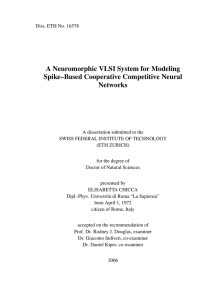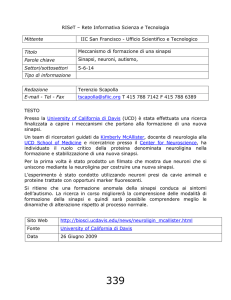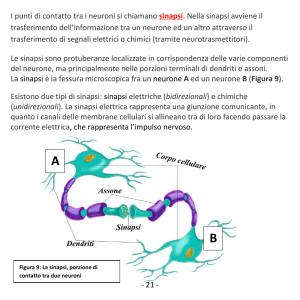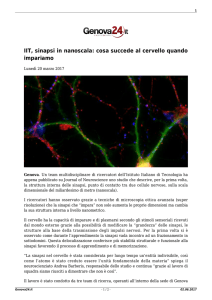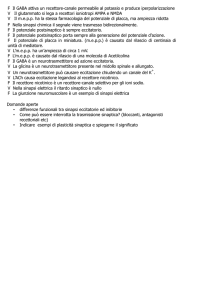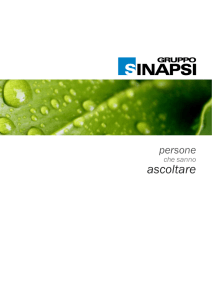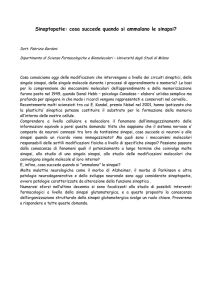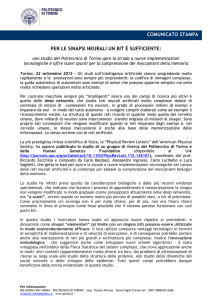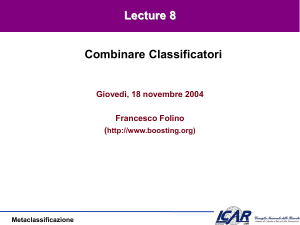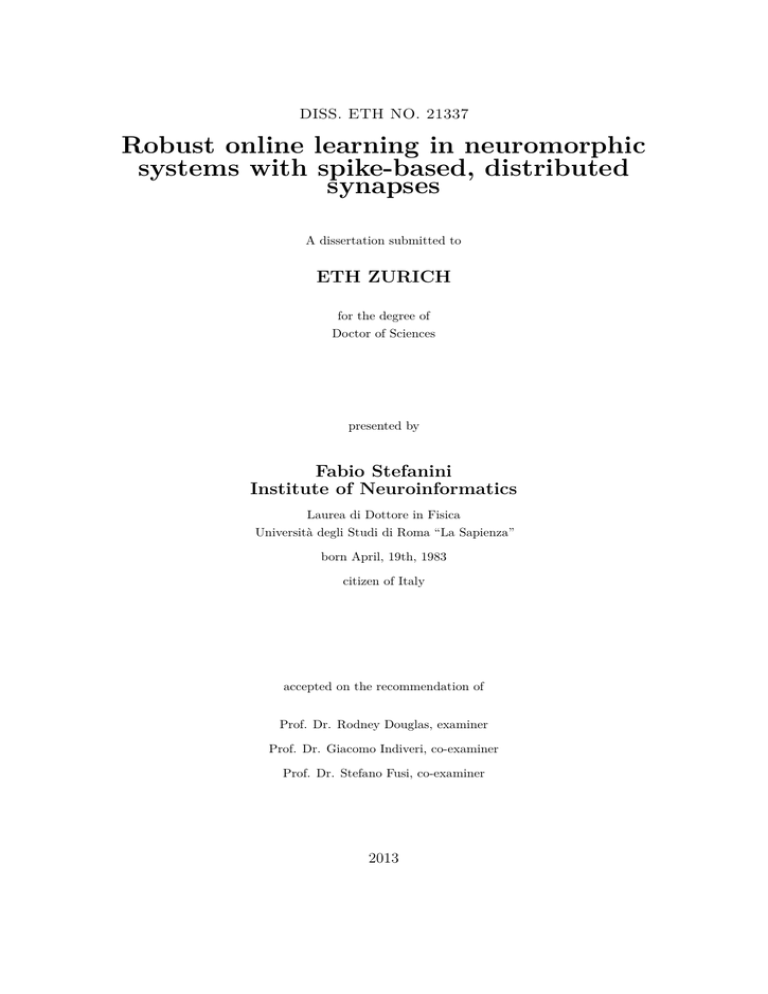
DISS. ETH NO. 21337
Robust online learning in neuromorphic
systems with spike-based, distributed
synapses
A dissertation submitted to
ETH ZURICH
for the degree of
Doctor of Sciences
presented by
Fabio Stefanini
Institute of Neuroinformatics
Laurea di Dottore in Fisica
Università degli Studi di Roma “La Sapienza”
born April, 19th, 1983
citizen of Italy
accepted on the recommendation of
Prof. Dr. Rodney Douglas, examiner
Prof. Dr. Giacomo Indiveri, co-examiner
Prof. Dr. Stefano Fusi, co-examiner
2013
Abstract
Neuromorphic Very Large Scale Integration (VLSI) hardware offers a low-power and compact
electronic substrate for implementing distributed plastic synapses for artificial systems. However,
the technology used for constructing analog neuromorphic circuits has limited resolution and
high intrinsic variability, leading to large circuit mismatch. Consequently, neuromorphic synapse
circuits are imprecise and thus the mapping of pre-defined models onto neural processing systems
built with such components is practically unfeasible. This problem of variability can be avoided
by off-loading learning to ad-hoc digital resources external to the synapse but this work-around
introduces communication bottlenecks and so compromises compactness and power efficiency.
Here I propose a more direct solution using a system composed of aggregated classifiers and
distributed, stochastic learning to exploit the intrinsic variability and mismatch of the substrate.
The system consists of a feed-forward neural network with one hidden layer of randomly connected
neurons with fixed weights and a pool of binary classifiers with stochastic learning. To demonstrate
the system, I developed software procedures to configure the hardware classifier and used them
to test its ability to learn to identify a target class. The method follows earlier works where
the neuron circuit parameters are first configured to obtain the desired behavior and then the
plastic synapses are characterized by imposing determined pre- and post- synaptic mean activities.
The classifier is then included in a simulated environment to compare the complete system to
theoretical and computational models. In particular, a well-known dataset consisting of images of
hand-written digits has been used as benchmark to demonstrate with experimental results that
by aggregating the responses of imprecise classifiers trained with the feed-forward network it is
possible to achieve a performance which is comparable to state-of-the-art. The intrinsic noise
present in the neuromorphic hardware and the type of distributed plastic synapses used result in
an effective combination of classifiers, as described by recent machine learning techniques. This
work is a crucial step towards enabling online learning through synaptic plasticity on imprecise
hardware, thus providing a novel, resource efficient substrate for machine learning. It demonstrates
how a “bottom-up” approach that exploits the properties of the substrate to obtain a functioning
neuromorphic system can elegantly overcome the complications due to the calibration of imprecise
circuits with limited configurability, thus extending the valuability and feasibility of analog VLSI
techniques. The biological plausibility of the system links to relevant issues in neuroscience, such
as the role of intrinsic variability in probabilistic computation in the brain, and suggests possible
design strategies for future emerging technologies.
v
Classification in VLSI
Compendio
Hardware neuromorfo costruito con tecnologia VLSI offre un substrato compatto di tipo low-power
per l’implementazione di sinapsi plastiche distribuite in sistemi artificiali. Il tipo di tecnologia
correntemente utilizzata per realizzare circuiti neuromorfi presenta tuttavia una bassa risoluzione
e un’alta variabilità intrinseca, quindi una grande disomogeneità circuitale, cioè mismatch. Per
questo motivo i circuiti neuromorfi che realizzano le sinapsi sono imprecisi e una mappatura
di modelli prestabiliti su sistemi costruiti a partire da tali componenti diventa una soluzione
praticamente impercorribile. Il problema della variabilità può essere evitato dedicando risorse
specializzate ai meccanismi di apprendimento, separate dal blocco di circuiti neuro-sinaptici,
tuttavia questa opzione introduce colli di bottiglia di comunicazione e compromette compattezza
circuitale e efficienza energetica. La mia proposta consiste in una soluzione più diretta che usa
un sistema composto da classificatori aggregati e apprendimento stocastico distribuito al fine di
sfruttare la variabilità intrinseca e il mismatch del substrato. Il sistema consiste in una rete neurale
di tipo feed-forward con un livello intermedio di neuroni connessi a random, con pesi sinaptici fissi,
e un insieme di classificatori binari con apprendimento stocastico. Per dimostrare la funzionalità
del sistema, ho sviluppato le procedure software necessarie per la configurazione dei classificatori
hardware e le ho usati per testare le loro capacità di apprendimento nell’identificare una data
classe di stimoli. Questo metodo segue precedenti lavori in cui prima i parameteri circuitali del
neurone vengono configurati per ottenere il comportamento desiderato e successivamente una
caratterizzazione delle sinapsi plastiche viene ottenuta imponendo determinate attività pre- e postsinaptiche. Il singolo classificatore è stato poi inserito in una simulazione per confrontare il sistema
di classificazione completo con i risultati stimati dalla teoria e dai modelli. In particolare, un set di
dati di caratteri scritti a mano comunemente usato in computer science è stato usato come punto
di riferimento per dimostrare, con risultati sperimentali, che è possibile ottenere una performance
di classificazione confrontabile con lo stato dell’arte tramite una combinazione di risposte di
classificatori imprecisi addestrati con la rete feed-forward. La presenza del rumore intrinseco
dell’hardware neuromorfo e il tipo di sinapsi impiegate comportano un’efficace combinazione di
classificatori, come si trova in certe recenti descrizioni di tecniche di machine learning. Questo
lavoro rappresenta un passo in avanti rispetto alla possibilità di realizzare sistemi di apprendimento
online sfruttando plasticità sinaptica su hardware con basso fattore di precisione e quindi propone
un substrato nuovo, efficiente in termini di utilizzo di risorse, per machine learning. Il lavoro
dimostra come un approccio “dal basso” che sfrutti le proprietà del substrato per ottenere
un sistema neuromorfo funzionante può superare in maniera elegante le complicazioni dovute
alle accurate calibrazioni di hardware impreciso e con limitate possibilità di configurazione e
perciò estente la validità e la praticabilità del VLSI analogico. La plausibilità biologica del
sistema impiegato si collega a interessanti approfondimenti nelle neuroscienze e suggerisce possibili
strategie di design per le future tecnologie emergenti.
vi

